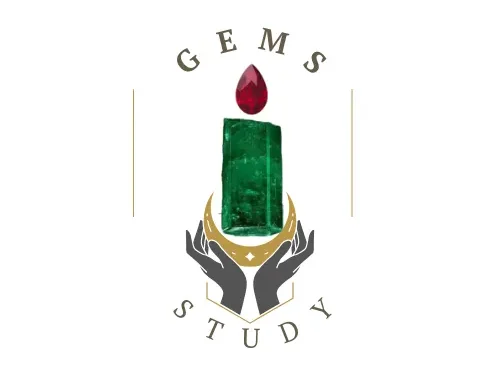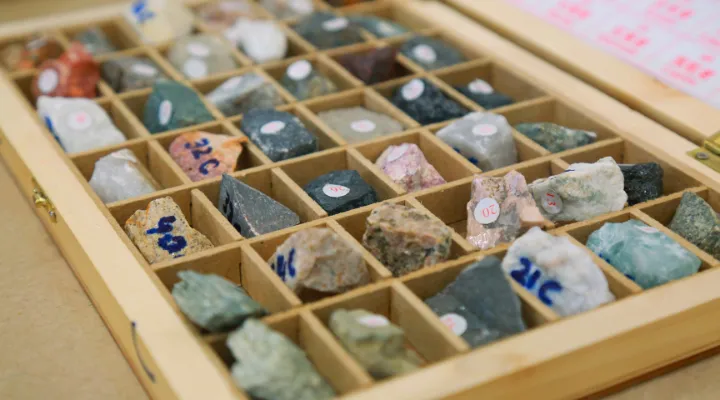how to tell if a gemstone is real?
Are you wondering if the gemstone you bought is genuine or just a clever imitation? With so many synthetic and fake gems flooding the market, it’s crucial to know how to identify real gemstones. Whether you’re a crystal collector, jewelry lover, or gemstone investor, this guide will walk you through easy and expert methods to tell if your stone is real or fake.
🔍 Why Gemstone Identification Matters

Real gemstones like sapphires, emeralds, rubies, and diamonds hold emotional, spiritual, and financial value. Unfortunately, many synthetic or imitation stones are sold as genuine — especially in online and tourist markets. Learning how to identify real gemstones not only protects your investment but also ensures you’re harnessing their true metaphysical properties (if you believe in crystal energy).
✅ Top Ways to Identify If a Gemstone Is Real
1. Visual Inspection with a Loupe or Magnifier
Look closely at:
- Inclusions: Natural stones often have tiny imperfections like lines, dots, or mineral traces.
- Air bubbles: Presence of air bubbles usually indicates glass fakes or resin-based stones.
- Color uniformity: Real stones often have natural color zoning, while fakes are unnaturally uniform.
✅ Pro Tip: Use a 10x jeweler’s loupe under natural light to inspect inclusions.
Link to your Emerald Guide
👉 Anchor text: “Learn more about identifying natural emeralds”
🔗 https://gemsstudy.com/emeralds-guide/
2. Hardness Test (Mohs Scale)

Each gemstone has a specific hardness:
- Diamond: 10
- Sapphire/Ruby: 9
- Quartz: 7
- Calcite: 3
Scratch the stone lightly with a material of known hardness. If the stone scratches easily, it’s likely a soft fake.
❌ Never test expensive gems without professional guidance – you may damage them.

3. Check for Certificates (GIA, IGI, AGL)
Always ask for a gemstone certificate from a reputable lab:
- GIA (Gemological Institute of America)
- IGI (International Gemological Institute)
- AGL (American Gemological Laboratories)
These certificates confirm whether the gemstone is natural, treated, or synthetic.
GIA (Gemological Institute of America)
👉 Anchor text: “gemstone certification from GIA”
🔗 https://www.gia.edu/gem-identification
4. Weight and Temperature
- Real stones tend to feel heavier and colder than fakes (especially glass or plastic).
- Thermal conductivity testers can help identify diamonds vs. simulants like moissanite.
5. UV Light (Fluorescence Test)
Many genuine gemstones react to ultraviolet light:
- Diamonds may glow blue or green.
- Some synthetic stones will not glow or may glow red/pink unnaturally.
6. Ask a Certified Gemologist
When in doubt, consult a professional gemologist. They use tools like:
- Refractometers
- Spectroscopes
- Polariscope
They can provide a complete gemstone authentication report.
Link to your post on natural vs synthetic diamonds
👉 Anchor text: “Difference between natural and synthetic diamonds”
🔗 https://gemsstudy.com/difference-btw-natural-synthetic-diamonds/

❌ Common Fake Gemstone Materials
| Fake Material | Mimics | Clue to Spot It |
|---|---|---|
| Glass | Quartz, Topaz | Air bubbles, low weight |
| CZ (Cubic Zirconia) | Diamond | Too perfect sparkle |
| Resin/Plastic | Turquoise, Amber | Feels warm, light, scratches easily |
| Synthetic Corundum | Ruby, Sapphire | Lacks natural inclusions |
🧠 Bonus: Commonly Faked Gemstones
- Amber: Often faked with plastic.
- Turquoise: Frequently dyed or stabilized.
- Emerald: Commonly sold as synthetic beryl.
- Moonstone: Sometimes replaced with glass cabochons.
💡 Final Thoughts: How to Stay Safe
✔️ Tips for Buying Genuine Gemstones
- Buy from reputable dealers only.
- Always request a lab certificate.
- Be skeptical of deals that seem “too good to be true”.
- Educate yourself on gemstone properties before shopping.
Real gemstones carry history, beauty, and energy — don’t let a fake dull your sparkle.
📌 Frequently Asked Questions (FAQ)
Use a magnifier to check for inclusions, do a scratch test, and examine weight. For diamonds, you can also use thermal conductivity testers.
They may have decorative value but hold no resale or metaphysical value compared to real stones.
No — lab-grown gems have the same physical and chemical properties as natural stones. They are real, just not formed in nature.

